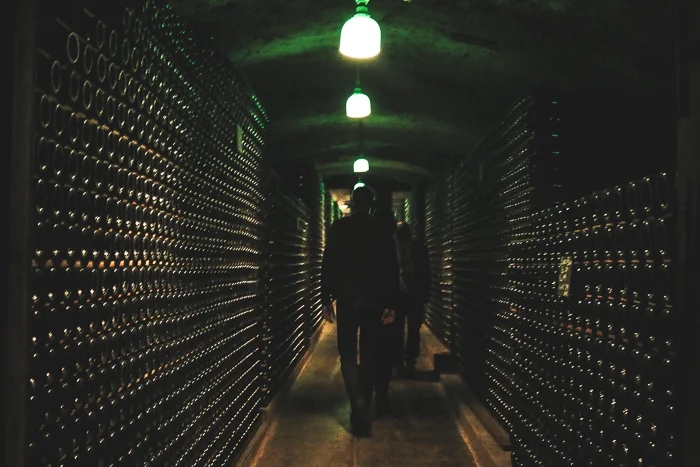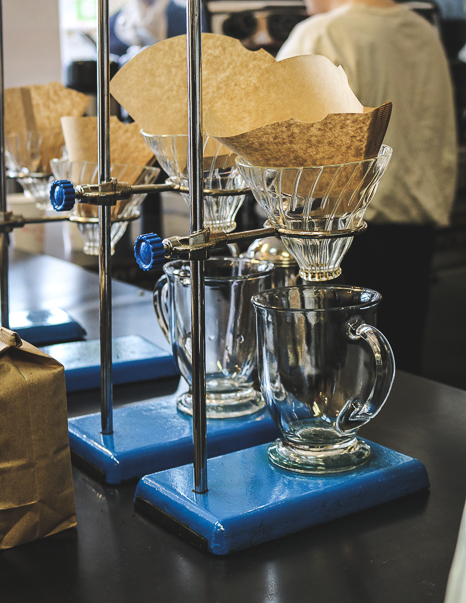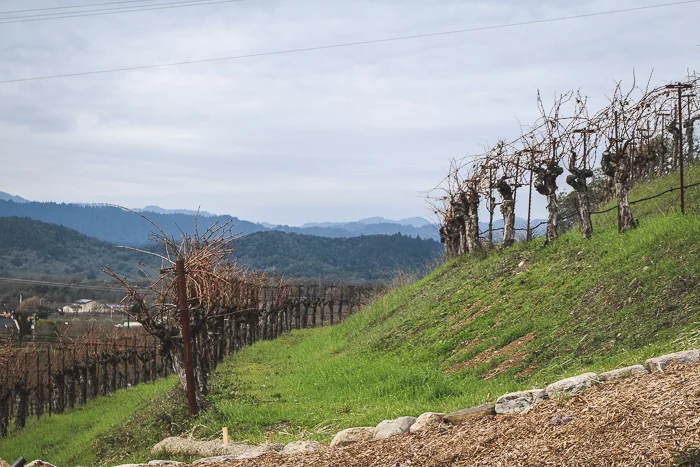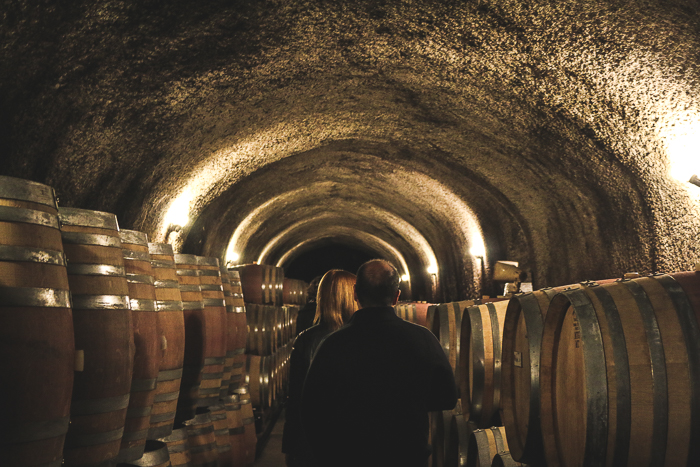To celebrate the new year and get inspired we took a weekend trip up to Napa and Sonoma with some foodie friends from Chicago. On our adventure, we explored several wineries that are "family businesses". CampEats is like a newborn compared with these established, multi-generational, powerhouses that have grown from someone's dream to sustainable enterprises. I wanted to share a few of their stories and some nom-able photos.
Our first tour was at the Schramsberg Vineyard, which is having its 50th anniversary this year. As we approached the wine caves for our tour, we drove past the owner walking his dogs and enjoying crisp winter air. His family - the Davies - re-invigorated Napa Valley's second-oldest winery (built by the Schrams family in 1862). Instead of producing still wines - as the Schram's did - the Davies have focused on sparkling wine since bringing the label back to life in 1965.
On our tour, I learned just how complicated it is to make those tiny bubbles in my favorite sparkling wines. Fermentation is a beautiful thing to behold. We also explored the wine caves on the property. A good portion of the main cave was created in the 1800's by Chinese laborers. You can see the pick axe marks.
One of the most interesting discussions we had while at Schram's was with the tasting room employees. My husband asked them "what pushes wineries to sell?" They thought that the lack of interest in making wine by "the next generation" forces many owners of the sales. This seems likely a very powerful force that many family businesses need to work through. According to Forbes, only 3.5% of students want to join the family business right after graduation.
Our second tasting was at another more modern family business. We stumbled on the Olabisi tasting room as we were wondering around Calistoga enjoying a few nibbles and some fantastic coffee. To be honest, the coffee nerds got the brews while a few of us were drawn into the hidden tasting room by a clever curb-side stencil. Note drip coffee is perfect for camping though here are a few more camping appropriate drip coffee rings. The one in the photo looks beautiful but doesn't make much sense for the campsite.
Olabisi was founded by a husband and wife pair in 2002. They are high-end micro-producers making less than a thousand cases per year. From their tasting room manager Brian, we learned that Olabisi gets their grapes by nibbling on the edges of larger plots - buying fruit from a few acres here and there - to bring to life tiny-batches of bespoke vino. One of their wines is even made from top-secret grapes. Like many smaller food producers, small batch wine labels start with a direct to consumer approach and then sometimes build wholesale distribution.
We also made a pit-stop (no pun intended) at the Tank tasting room. This project isn't a family business, but rather a join-venture between friends. If you are in the area you should ask them to show you their secret back room. It is a lush prohibition style spot set-up for visitors in the know to enjoy a delicious glass of wine.
On day two of the trip, our friends introduced us to the Robert Sinskey Vineyards (RSV for short). They are members of their Gluttonous wine club and thoughtfully arranged for the four of us to take the Perfect Circle Tour. This little jaunt is very appropriately named as it was a perfect introduction to another family's story. Like the Schramsberg label, RSV is an enterprise that relies on multiple generations to make its business go.
This family winery started with one father's vision and a son's creative interpretation. In the mid-sixties, Bob Sinskey was able to forecast the change in American cuisine that would lead to the rise in Pinot Noir. As a result, he bought some land and began to cultivate the right grapes for lighter-bodied wines. What he wasn't able to predict the forthcoming importance of a medical procedure he invented, which kept him a practicing physician until 2000. Lucky for him his son was willing to come help him get his fledgling business off the ground and fell in love with winemaking.
Robert brought his eye for visual design and an innovative approach to land use. The Sinskey wines are all organic, and they are grown using biodynamic methods. But they take it to the next level. From grey-water catchments to making yarn from the wool and tasty dishes from their herd of "fertilizing" sheep they do their best to use it all.
28 vintages later Robert Sinskey is still obsessed. Over the course of his career, he was also able to add an important new member to the family business - his wife, professional chef, Maria Helm Sinskey. We had not only the pleasure of enjoying Robert extremely drinkable wine, but we also enjoyed Maria Sinskey's culinary delights and her fine company. Lucky for us, Robert and Maria's goal is to make "pure wines of character that pair well with cuisine."
They are truly a model family business. And all in all this was a lovely trip. I am coming back to San Francisco inspired to grow our family business plus a filled tummy and a stocked wine rack. I am ready to start into the unknown maybe I'll find some wine in those hills.







